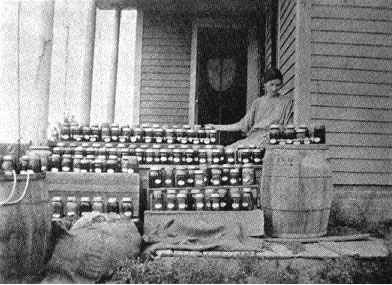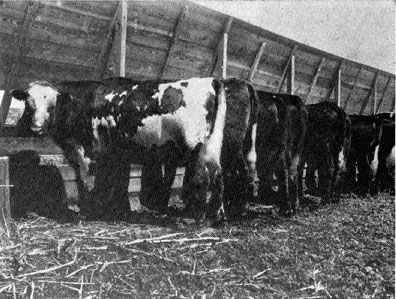![]()
as any other could possibly be, produced an average of 42 bushels per acre. Hooker Grant, Thomas, Cherry, Arthur and McPherson counties, which may be taken as typical of the socalled "sandhill region," produced an average of 20 bushels of corn per acre in 1917. The real value of this corn production in the six counties last named is not measured by the cash market price but by its value to the cattle feeders of that wonderful cattle producing section. There is not a county in Nebraska where corn production is not profitable. In the eastern section it is profitable to raise it for sale in its raw state. In the central and western sections its profit shows best when fed to stock. The silo has added much to the value of corn for feeding purposes in the western part of the state where the altitude is so great that corn fails to mature properly a goodly portion of the time. The corn is cut before frost and put into silos and provides an abundant and extremely valuable winter forage. During a period of twenty years, 1895 to 1916, Nebraska was the fourth largest wheat producing state. Wheat is successfully grown in every county in the state, winter wheat predominating in the eastern and central sections and spring wheat in the western section. The average yield per acre in 1916 was 22.7 bushels, the average for the entire United States being 12.5 bushels per acre. |
![]()

Hazel Furman, Champion Girl Canning Expert of Nebraska The homeseeker who is looking towards Nebraska for comparatively cheap land should not overlook the wheat possibilities of western Nebraska. Eastern and central Nebraska have already proved their leadership in wheat production, but the time seems near at hand when the eastern half of Nebraska will have to "go some" if its hold upon the premiership in wheat production is not wrested from it by western Nebraska. |
![]()
 |
 |
 |
© 2002 for the NEGenWeb Project by Pam Rietsch, Ted & Carole Miller
